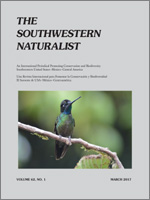Noninvasive measures of stress response are used to understand impacts of natural and anthropogenic disturbances on wild animals and can be challenging to interpret without additional contextual information and specifics of the animals in question. We used fecal samples collected from the Henry Mountains American plains bison (Bison bison) herd in Utah to measure the glucocorticoid hormone corticosterone (CORT), a hormone that is indicative of stress. We compared site-specific measures of fecal CORT concentration with measures of covariates related to geography, bison physiology, and human activity to determine whether an unexpected habitat selection pattern could be a response to human disturbance and thus whether ecological covariates could explain variations in fecal CORT concentration in free-ranging bison. No meaningful relationships were found for any of the covariates included in the study, in part due to a scale mismatch between the physiological stress response of bison and the spatiotemporal distribution of fresh feces deposited.
How to translate text using browser tools
1 March 2017
Considerations of context and scale when using fecal glucocorticoids to indicate stress in large mammals: A study of wild american plains bison
Dustin H. Ranglack,
Lorin A. Neuman-Lee,
Susannah S. French,
Johan T. du Toit
ACCESS THE FULL ARTICLE

The Southwestern Naturalist
Vol. 62 • No. 1
March 2017
Vol. 62 • No. 1
March 2017




